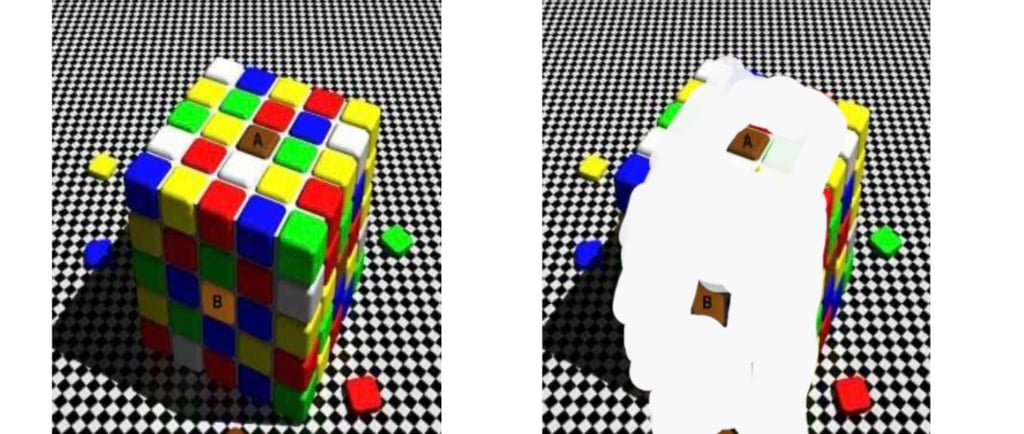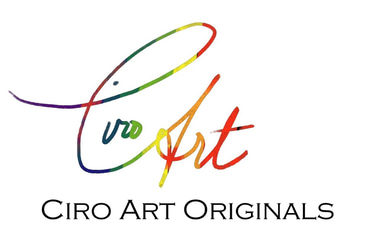The Great Art Illusion
When you look at a great painting, what do you see? What do you feel? If it’s a painting of a sunny beach, can you feel the warm sun on face? Can you hear the wind blowing through the palm trees. You may think you’re looking at a tree, a boat or a person etc. … But you are not! You are just looking at paint on a flat surface.
So how does an artist create this illusion ?First, let’s test your perception. See if you can tell me which square is darker… A or B
If you isolate A and B , you’ll see that A and B are the same color. Yet we perceive B as being much brighter.
If you look at the color cube below, you perceive A ,B and C seems as different shades of orange and brown. When you isolate these squares, you will see that squares A, B and C are actually the same color.
Here’s a real life example. I’m currently painting the sky from a reference photo I took in Venice. I’m mixing my lightest sky color on my palette so that I could paint the brightest part of the clouds. I had to check it more than once, even though I knew that the brightest part of the clouds was a medium blue gray . Yet I had trouble convincing myself it would be so dark.
The the following are the brightest highlight colors I sampled from the reference photo:
When it comes to creating art, there are no absolutes. The perception of light, dark and color is dependent on its relative context. Now, add the variables of how ambient light falls on the palette and canvas. What direction is thestudio window facing? What is the temperature of your lighting? If its too warm (low kelvin) then your paintings may have a cool tone because you compensate thinking your colors are too warm. These are some practical issues the artist must deal with.
When we draw or paint , we using tools such as grid lines , negative space, and turning the picture upside down so we can turn off that part if the brain that can mislead. There is always a conversation between the right and left brain; one that tells us what is, and the other that tells us what we think it should be. When I paint, you can sometimes hear that conversation out loud.
If I want to fool your brain to make you think something is far away, I will create an illusion by using perspective and making it bluer, brighter and blurrier. That’s the technical part that helps you answer that “what do you see” question. What about the “what do you feel” part? That is the great art illusion.
On a recent trip to the Metropolitan Museum of Art in NY, I studied how the masters used brushstrokes, edge contrast, paint, thickness, details in the shadows, etc. . I imagined John Singer Sargent, making chaotic abstract brushstrokes to create perfect likeness and texture. I imagined Rembrandt creating a catch light with one brush tap over the pupil. But the real magic is how he captured the subject’s personality, …Or maybe a bit of the subject’s arrogance or remorse by simply moving paint from palette to canvas .
When you walk into a gallery and see a large Bierstadt painting, where the light shines through the canyon causing a glow on a Native American village, you can almost feel what it must have been like to live there. Just like a song that brings back an emotional memory , a masterpiece can grab your heart. The glow of a sunset painting can be glorious and make you ponder your place in the universe.
What does it take to create this great art illusion? Maybe its takes something deep inside the artist ; a unique understanding of humanity ? Perhaps it requires a degree of passion and emotional energy that is strong enough to move a hand holding an ear-cutting knife across one’s face. Or a love of true beauty that passes like electricity from the heart to canvas to the viewer’s eye.
In reality, it’s just paint on canvas.




